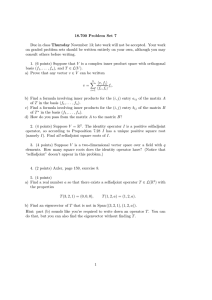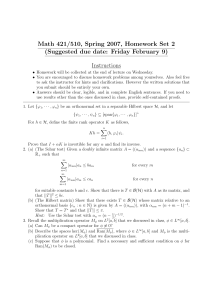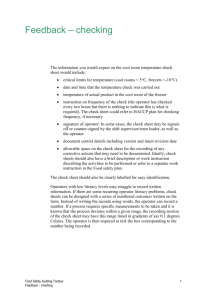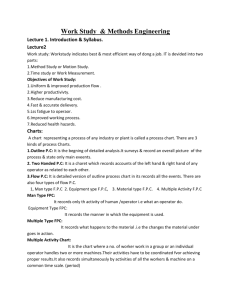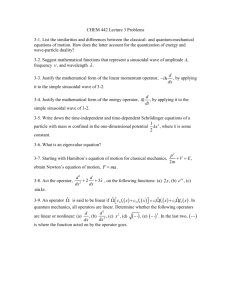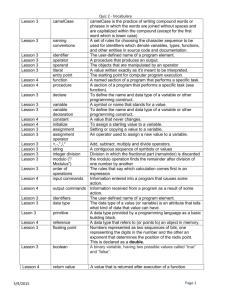Functional Analysis Problem set 2
advertisement
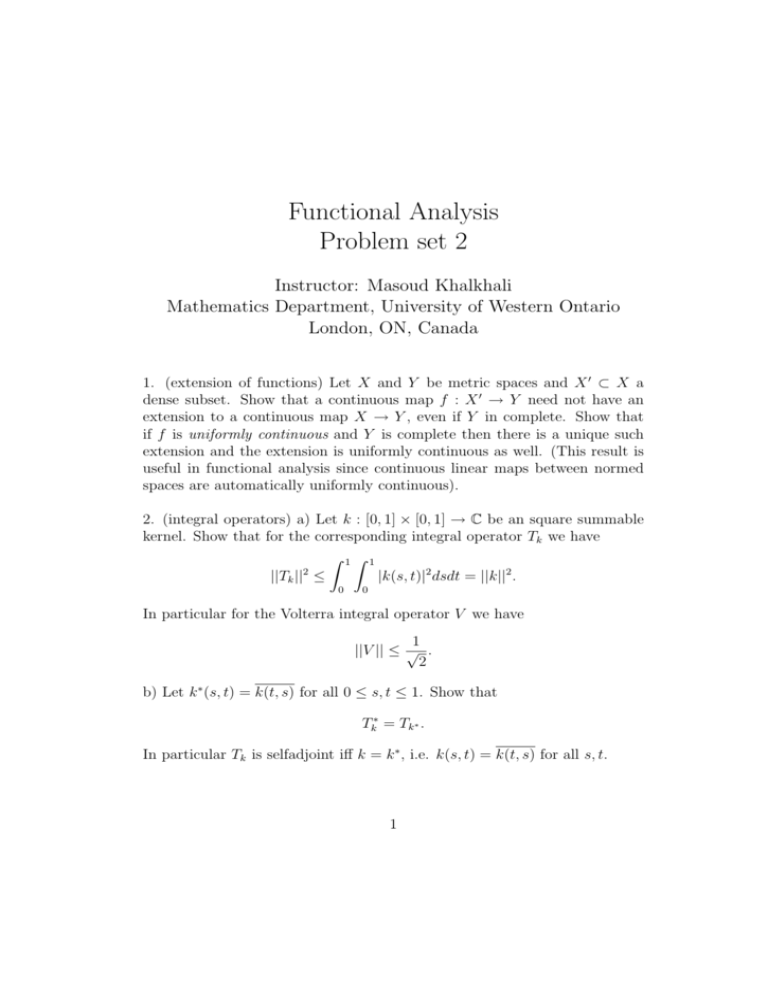
Functional Analysis
Problem set 2
Instructor: Masoud Khalkhali
Mathematics Department, University of Western Ontario
London, ON, Canada
1. (extension of functions) Let X and Y be metric spaces and X 0 ⊂ X a
dense subset. Show that a continuous map f : X 0 → Y need not have an
extension to a continuous map X → Y , even if Y in complete. Show that
if f is uniformly continuous and Y is complete then there is a unique such
extension and the extension is uniformly continuous as well. (This result is
useful in functional analysis since continuous linear maps between normed
spaces are automatically uniformly continuous).
2. (integral operators) a) Let k : [0, 1] × [0, 1] → C be an square summable
kernel. Show that for the corresponding integral operator Tk we have
Z 1Z 1
2
||Tk || ≤
|k(s, t)|2 dsdt = ||k||2 .
0
0
In particular for the Volterra integral operator V we have
1
||V || ≤ √ .
2
b) Let k ∗ (s, t) = k(t, s) for all 0 ≤ s, t ≤ 1. Show that
Tk∗ = Tk∗ .
In particular Tk is selfadjoint iff k = k ∗ , i.e. k(s, t) = k(t, s) for all s, t.
1
3. We saw that the operator
d
: D → L2 [0, 1]
dx
is unbounded with respect to the L2 -norm on D. Show that it is bounded
with respect to the inner product on D defined by
Z 1
hf, gi =
(f ḡ + f 0 ḡ 0 ).
0
4. Let k : R → C be a 2π-periodic continuous function and define an integral
operator K : L2 [−π, π] → L2 [−π, π] by
Z π
(Kf )(x) =
k(x − y)f (y)dy.
−π
Compute the matrix of K with respect to the o.n. basis ( √1 einx )n∈Z .
2π)
5. (norms and adjoints) a) Let T be a bounded linear operator on a Hilbert
space H. Show that
||T ∗ || = ||T ||.
b) Show that if T is selfadjoint then
||T || = Sup |hT x, xi|
where the sup is over the set ||x|| = 1. Show that this formula is not necessarily correct for non-selfadjoint operator.
c) Use b) to show that for any T
||T ∗ T || = ||T ||2 .
6. (more on spectrum) a) Let T be a nilpotent operator, i.e., T n = 0 for some
positive integer n. Show that 1 + T is invertible.
b) Use a) to show that σ(T ) = {0}, if T is nilpotent.
2
c) Generalize a) by proving the spectral mapping theorem: for any polynomial
f (x) with complex coefficients we have
σ(f (T )) = f (σ(T )).
d) Show that for any two operators a and b we have
σ(ab) \ {0} = σ(ba) \ {0},
that is ab and ba have the same spectrum except for one point 0.
7. Solve Problems 3.3, 3.9, 3.27, 3.28, 3.34 from the book ‘Elementary Functional Analysis’ by B. MacCluer (available online in our Library’s website).
3

